Design for a higher purpose: empowerment and inclusion at Pune Design Festival 2019
The 13th edition of PDF 2019 featured a range of inspiring keynotes on design contributions to livelihood, endangered crafts, and environmental sustainability.
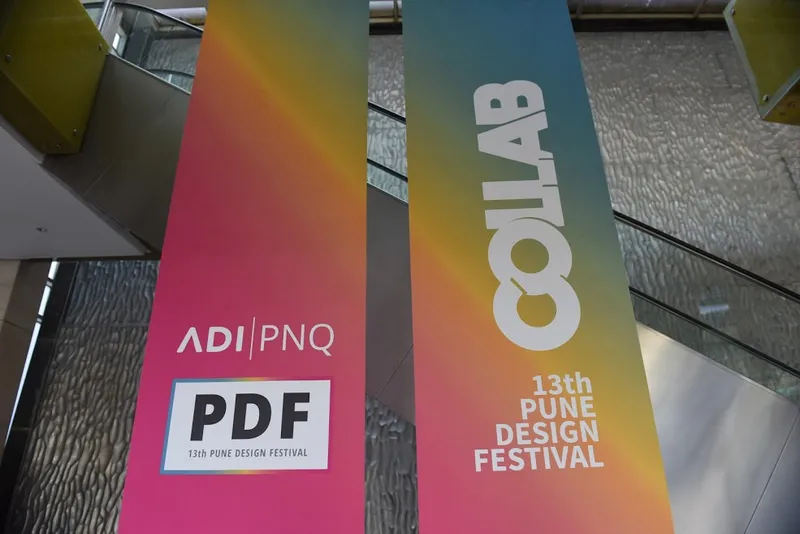
The two-day Pune Design Festival (PDF), organised by the Association of Designers of India (ADI), featured a broad spectrum of keynotes, panel discussions, and workshops on design directions and agendas.
“A core thought at PDF has always been to curate talks based on relevant themes and topics. This year’s theme of collaboration features keynotes and case studies that showcase the immense potential of partnerships, collaborations and experimental mindsets,” said Ashish Deshpande, ADI President and Co-founder of Elephant Design, in a chat with YourStory.
“PDF leaves the community stronger through networking and bonding, and the curation provides a sense of direction to young professionals,” Ashish added.
In this article, we feature highlights from six inspiring keynotes on design contributions in conflict zones, marginalised communities, and endangered cultural traditions.
See also YourStory’s coverage of the design conferences Singapore Design Week, Design4India, Bengaluru ByDesign, DesignUp, UX India, Design4Success, Design Talks, and BeFantastic. Check out our d-Zen section for in-depth book reviews, interviews, and expert pieces as well.
1. Design in turbulent times
During times of strife, designers can make a contribution to local crafts, cultural preservation, and livelihood in conflict zones, said Shruti Jagota Mittal, Project Head, Commitment to Kashmir (CtoK). Her organisation has worked with 22 craft producers in Kashmir, providing market outreach, funding, project management, design skilling, product branding, programme implementation, and exhibitions at festivals.
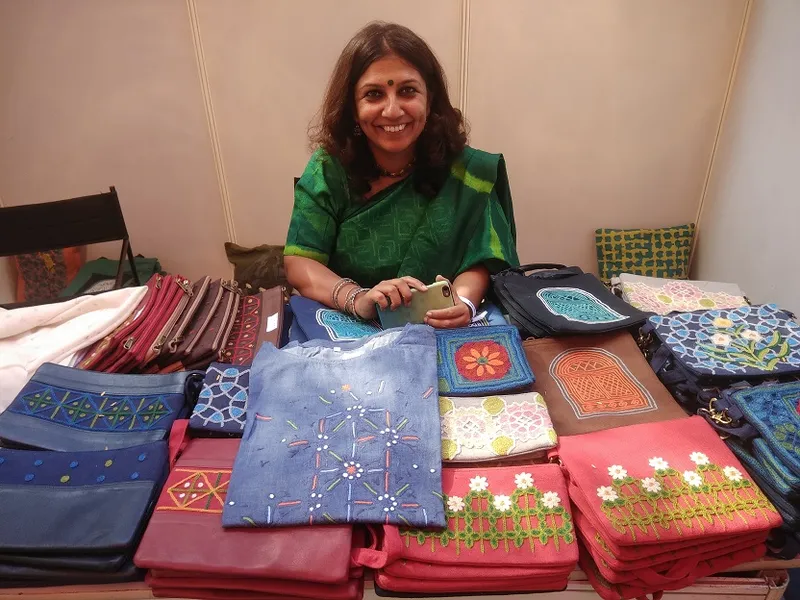
In a region under conflict for over 30 years, with frequent curfews and strikes, people have a hunger for peace, stability and meaning, Shruti explained. Crafts making and trading involve 60 percent of the families in Kashmir, and some craft forms are in danger of dying out within a generation, she cautioned.
“Design and technology collaborations are game-changers in the Kashmir valley,” Shruti stressed. She showed examples of the process and product contributions to namda, crewel, and sozni crafts. Mentoring and cross-pollination of craft techniques have helped in areas like quality and finish.
2. Design and vanishing craft traditions
AG Rao, former head of Industrial Design Centre (IDC), Indian Institute of Technology Bombay, shared his work on tackling the vanishing product traditions of India. His other work includes designing of electronic voting machines.
Rao studied bamboo craft in North Eastern India, developed a toolkit for bamboo artisans, and established Bambu Studio at IDC for impactful designs in bamboo. He initiated micro-commons facility centres for bamboo crafts in a number of villages and founded the incubator AG Bambu Style. He is also a member of the editorial board of the International Journal of Bamboo and Rattan.
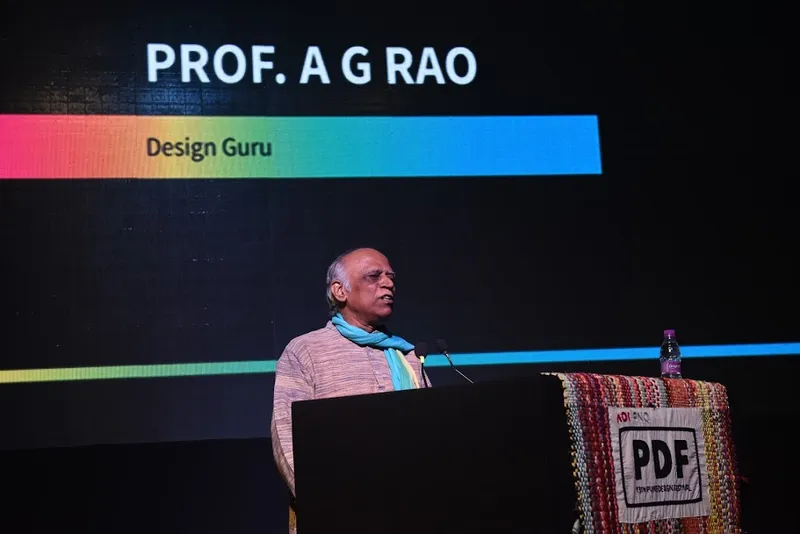
Design teachers should not see themselves as preachers but as collaborative problem-solvers with learners, he advocated. To teach these skills is one thing, but giving artisans market access is equally important, he added, drawing on his experience with UNDP projects.
Design colleges and institutes are expensive for the average citizen, and especially for the underprivileged; it is important for design and crafts to be taught right at the school stage, Rao urged. “Crafts need to be seen as much more than decorative items,” he said. He also teaches a course on ‘Craft, Creativity and Post-modernism.’
3. Design for sustainability and cultural interpretation
In a world of increasing consumerisation, designers need to take care to address issues of social and environmental sustainability. Pavitra Rajaram, Head of Creative Strategy at Good Earth, urged designers to stay away from the Western style of large-scale consumption, wastage, and discarding of old items.
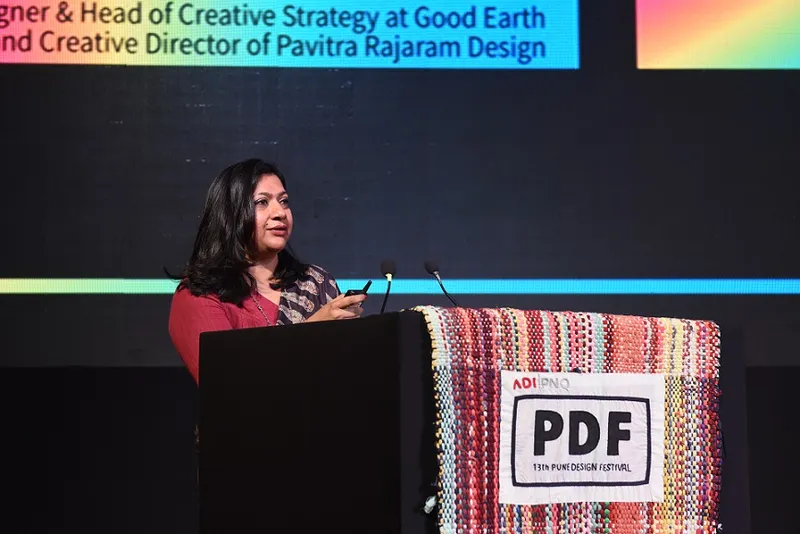
Good Earth’s offerings range from textiles to tableware, leveraging the digital medium for cohesive and rooted storytelling about traditional crafts and nature. Pavitra sees design as a bridge between the cultures of earlier eras and the present; this can span art history and even politics. “Culture is cumulative, built over the years,” she explained.
4. Design as creative humanism
“Design can improve the lives of those who are last in line,” said Gautam Karajgi, an engineer and former McKinsey consultant, who now leads the Smart Village Project at Anandwan. The village in Maharashtra was originally established in 1949 by social activist Baba Amte to rehabilitate ostracised people suffering from leprosy and other disabilities.
Gautam showcased a range of examples of the use of technology and design to provide livelihood training for patients of leprosy, schools for the deaf, and even therapeutic theatre. He shared moving stories of a differently-abled girl who paints greeting cards with her feet but continues to smile despite her predicament.
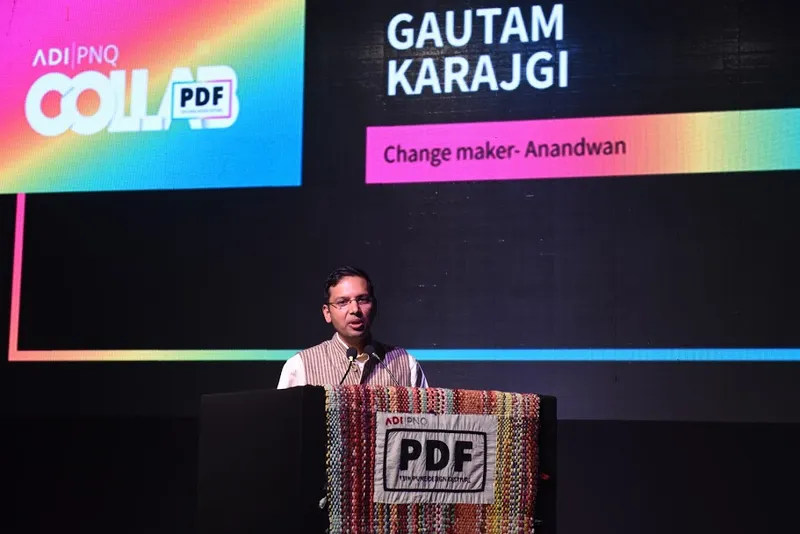
“Dexterity is in your mind, not just in your fingers,” Gautam said. The village is moving towards a carbon-neutral model of development, and also has an incubator for rural innovations.
5. Design as champion to society
Designers need to become champions not just of their own circles, but of broader industry and society, urged graphic designer and brand strategist Anthony Lopez. He shared a number of examples of his work with the Partnership for Maternal, New-born, and Child Health (PMNCH).
For example, pillow covers were a marketing element, and the covers could also be stitched together to make long banners. Noticing that many attendees discard conference bags later because the year of the event is mentioned on it, he designed bags where the year was mentioned on a smaller detachable label, thus making the bag usable for a longer time.
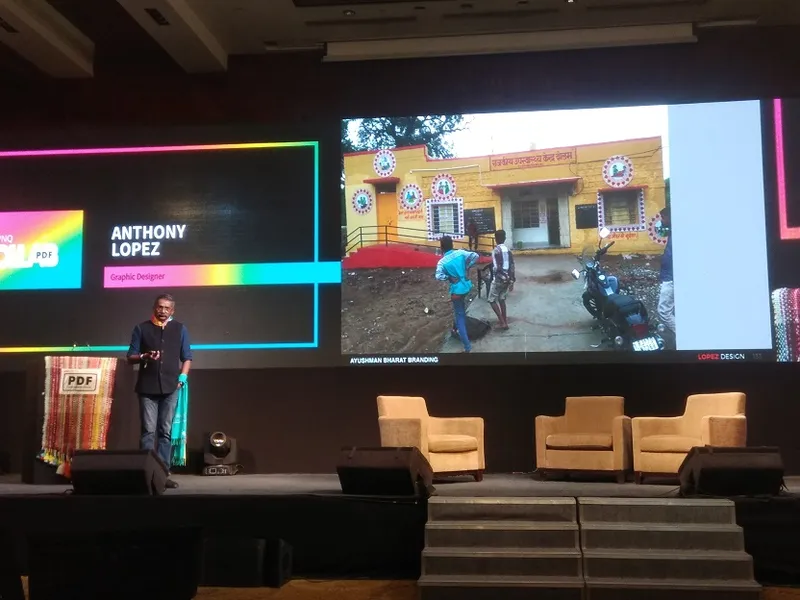
In another engagement, local designs were used for the rollout of the Ayushman Bharat programme’s health centres. They were based on warli, phulkari, aipan, kohbar and gond folk art. Anthony showcased other contemporary designs for clients such as Nestaway, where the janitors’ broom bags were made to look like guitar cases.
6. Design as caring
Despite technological and economic advancement, India continues to face severe challenges of disparity, division, and deprivation. “Is design making enough of a difference,” asked Ashoke Chatterjee, former Director of the National Institute of Design (Ahmedabad), and Advisor, Centre for Heritage Management.
Service, dignity and love should be the watchwords for design today, and the community should go beyond skills to values-based practice. He cautioned that design should not be seen as a frivolous waste of taxpayer money, and advocated that it should promote caring for one another and for the planet.
Though the United Nations’ 17 Sustainable Development Goals do not specifically mention the word design, they should be seen as a design agenda for the future, Ashoke explained. This applies specifically to Goal 12, which calls for responsible production and consumption.
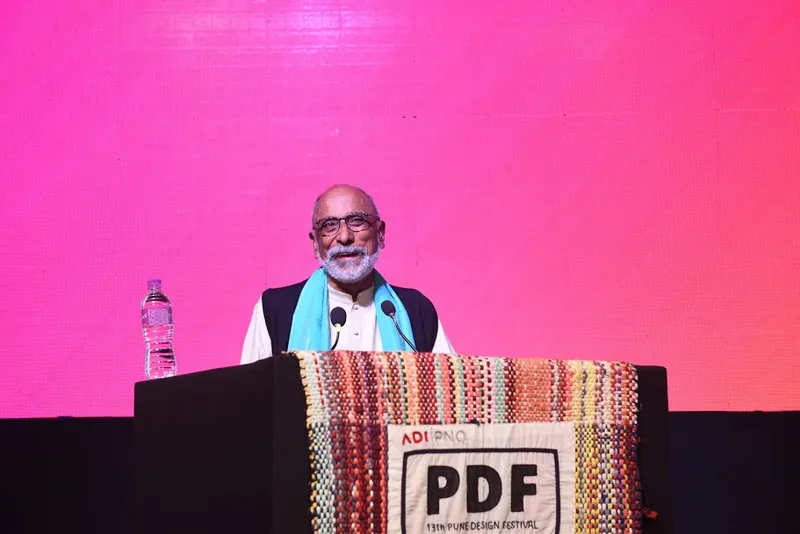
“The biggest challenges are in the social sector,” he emphasised; they span livelihood, shelter, education and health. Design should be relevant and central to tackling these challenges.
Other examples of impactful and inclusive designs were presented as part of the Lexus Design India Awards (to be covered in Part IV of this article series). Entrepreneurial strategies for designers were discussed in a separate panel (see our coverage here), and products from social enterprises like Commitment to Kashmir were exhibited at the Design Expo.
“Design can help build awareness about socio-economic challenges and cause behaviour change,” summed up ADI president Ashish Deshpande.







